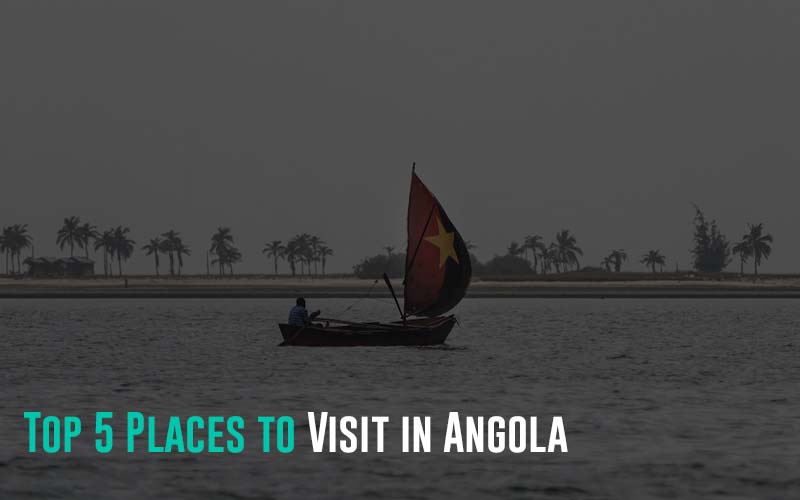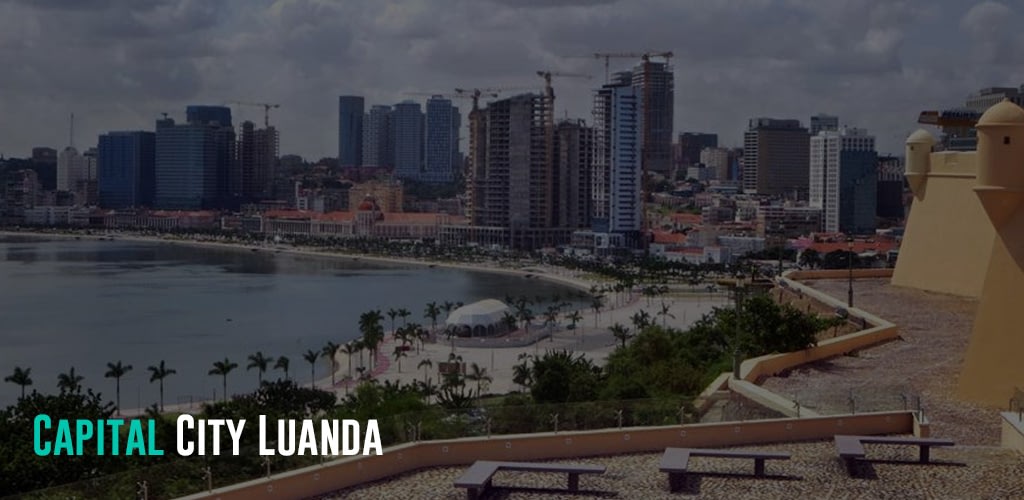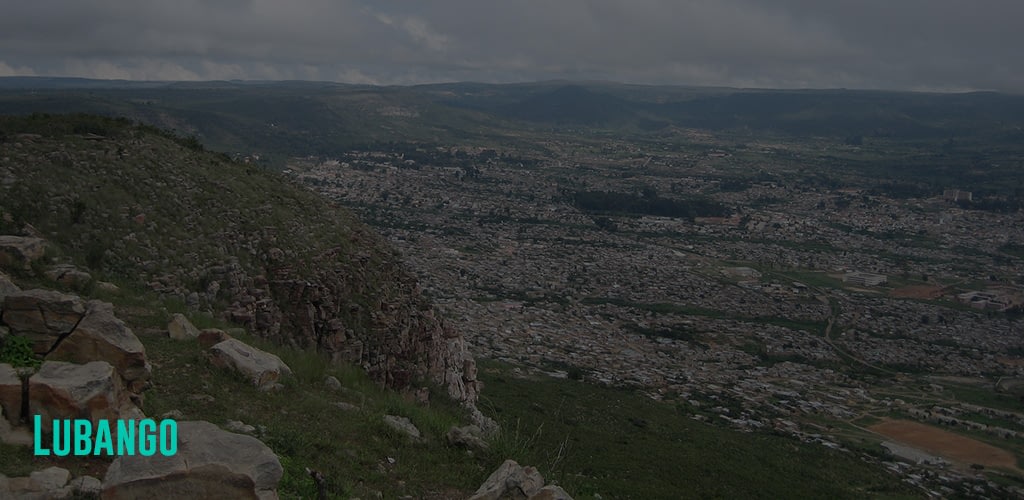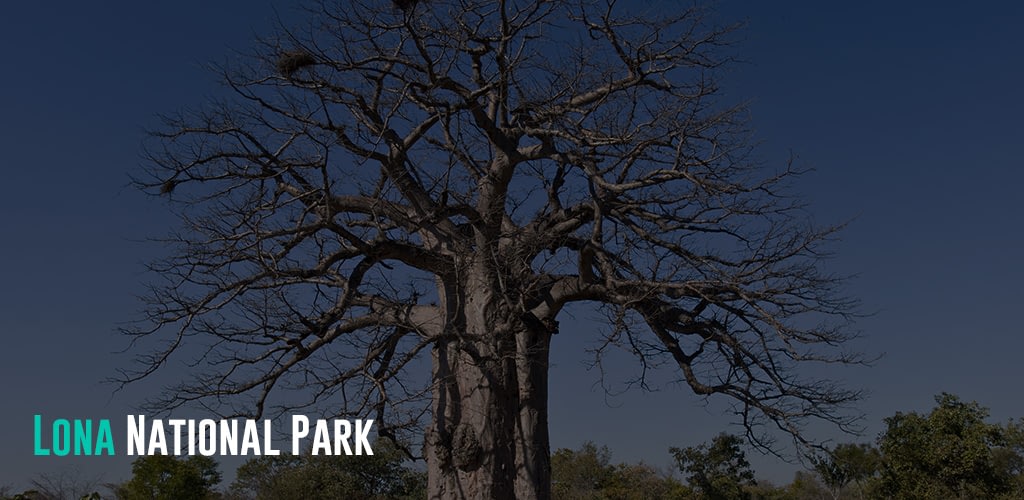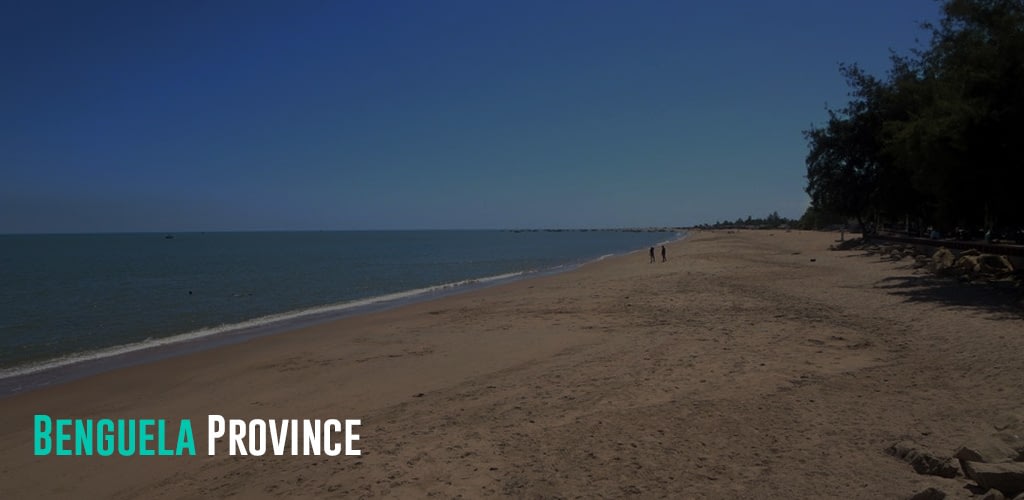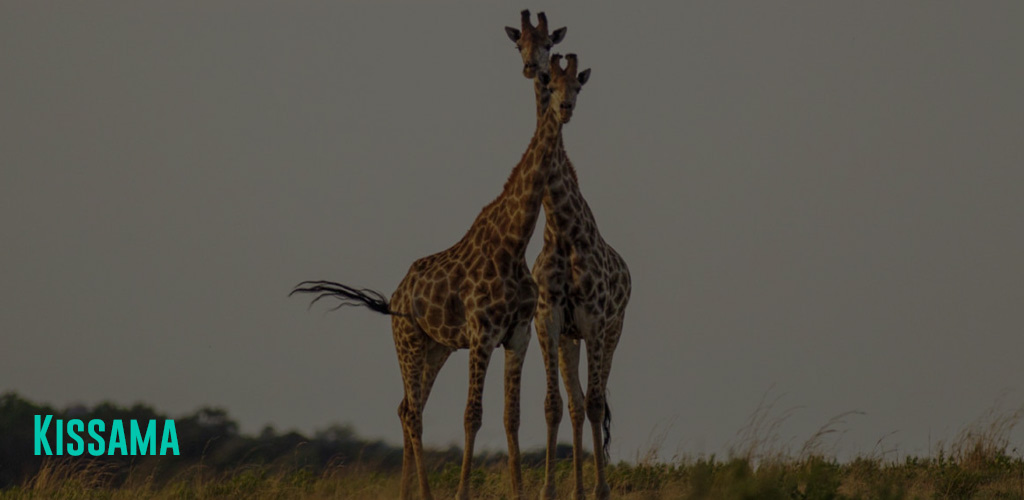Angola is a nation on Africa’s southwestern coast. It is a land of contrasts. Portuguese colonial heritage blends with vibrant African cultures. Breathtaking natural landscapes coexist with bustling cities. This captivating country was once marred by civil unrest. But it has emerged as a rising star on the African travel scene. It offers brave travelers a chance to explore its rich history. They can see its diverse ecosystems and feel its warm hospitality.
Featured Image Source
Angola offers a variety of experiences. It has the cosmopolitan capital of Luanda. Luanda has historic fortresses and a lively nightlife. It also has the serene beaches of Benguela. It has the majestic Iona National Park too. The park is full of wildlife. It also has the serene beaches of Benguela.
Visit Angola’s top destinations. Each stop shows a new side of this fascinating nation. Get ready to be enchanted by its lively cities. You will be awed by its natural wonders. And you will be embraced by the warmth of its people. Angola awaits, ready to weave its magic into the tapestry of your travel memories.
Capital City Luanda
Luanda is Angola’s biggest city and capital. It is vibrant and blends modernity with a rich culture. Luanda is the nation’s economic and political hub. It offers a fascinating glimpse into the country’s past and present. Here are some highlights of this captivating destination:
- Avenida 4 de Fevereiro: Avenida 4 de Fevereiro is an iconic seaside promenade. It’s known as the “Marginal” and is the beating heart of Luanda. It’s lined with restaurants, bars, and street vendors. It’s the perfect spot to soak up the city’s lively atmosphere and watch the locals.
- Fortaleza de São Miguel: Fortaleza de São Miguel is a 16th-century Portuguese fortress. It is a UNESCO World Heritage Site. It once guarded Luanda’s harbor. You can explore its well-preserved battlements and dungeons. You can also learn about the city’s chaotic colonial history.
- Museu Nacional de Antropologia: Experience the rich culture of Angola in this museum. It has an impressive collection of artifacts, masks, and sculptures. They are from many of the country’s ethnic groups.
Lubango
Lubango, previously known as Sá da Bandeira, is a place full of beautiful sights to see. One of the most famous spots is the Serra da Leba mountain range. The road through these mountains, built by the Portuguese, links Lubango with Namibe and offers breathtaking views that are perfect for Instagram photos. Here are some of these fascinating places:
- Cristo Rei Statue: The Cristo Rei Statue is a charming destination. It is often called the “City of Eternal Spring.” ” It has a mild climate, lots of greenery, and a rich culture. That culture is sure to captivate visitors.
- Tundavala Gap: The Tundavala Gap is a short drive from Lubango. The Cunene River carved this breathtaking, deep gorge. Admire the dramatic rock formations. Then, take a leisurely hike along the trails that wind through this natural wonder.
Lubango has colonial architecture. It was influenced by Portuguese and Brazilian styles. The architecture adds to the city’s charm. Stroll through the historic center. There, you’ll find charming churches, tree-lined avenues, and vibrant markets. They sell locally grown produce and handcrafted goods. For a taste of Lubango’s food, try the delicious quitutes (traditional snacks). Also, indulge in the region’s famous coffee. It’s grown in the surrounding highlands.
- Parque Nacional da Tundavala: Parque Nacional da Tundavala will enchant nature lovers. It includes the Tundavala Gap and offers chances for hiking and birdwatching. You can also explore the area’s diverse plants and animals.
Lubango has a mild climate, scenic beauty, and rich culture. It is a true gem not to be missed on any visit to Angola.
Lona National Park
Iona National Park spans the vast Namib Desert. It is an oasis of natural wonders. It is a must-visit for nature enthusiasts exploring Angola. This huge protected area offers a rare chance to see the raw beauty of the desert. You can also see some of Africa’s most remarkable wildlife.
- Desert-Iona National: This park is home to desert-adapted animals. They include the iconic oryx, the elusive brown hyena, and the majestic ostrich. Keep your eyes peeled for these tough creatures. They are navigating the arid terrain.
- Dune Landscapes: Prepare to be awestruck by the park’s towering sand dunes. They stretch as far as the eye can see. Go on a guided dune-climbing trip. Or, just bask in the surreal beauty of these ever-shifting desert formations.
For those who want an immersive experience, Iona National Park offers the chance to camp under the starry Namib skies. Fall asleep to the haunting calls of night creatures. Wake up to the sight of the desert bathed in the warm light of the rising sun.
- Welwitschia mirabilis: Welwitschia mirabilis is a remarkable plant. It’s also known as the “living fossil.” It is a true marvel of nature. These ancient, gnarled specimens are found nowhere else on Earth. They can live for over 1,000 years. This makes them some of the oldest living things on the planet.
Iona National Park has diverse wildlife and strange landscapes. It offers adventure and is a true highlight of any Angolan journey. The park gives an unforgettable look at the beauty and resilience of the Namib Desert.
Benguela Province
Benguela Province stretches along Angola’s pretty coastline. It is a treasure trove of natural beauty, rich history, and cultural diversity. This captivating region has a perfect blend of sunny beaches and old buildings. It’s a great place for visitors. It also has vibrant local traditions. This makes it a must-visit destination.
- Beaches of Benguela: The beaches of Benguela have pristine sands and vibrant waters. They are a true paradise for sun-seekers and water lovers. Spend your days basking in the warm African sun. Swim in the refreshing Atlantic. Or try your hand at water sports.
- Ilha de Luanda: Ilha de Luanda is a short boat ride from Benguela City. It’s a picturesque island steeped in history. Explore the remains of Portuguese forts. Wander through charming fishing villages. See the traditional way of life. It has endured for centuries.
Benguela City is a delight to explore. It has colonial architecture, lively markets, and a vibrant culture. Immerse yourself in the local way of life. Attend traditional music and dance performances. Enjoy tasty seafood dishes. And mingle with the friendly locals.
- Kwanza River Delta: The Kwanza River Delta will captivate nature lovers. It is a vast wetland area filled with diverse birdlife. This includes flamingos, pelicans, and various wading birds. Go on a guided boat tour or enjoy a leisurely hike along the meandering waterways.
Benguela Province has a stunning coastline, rich cultural heritage, and natural wonders. It offers an unforgettable Angolan experience. It will give you lasting memories. You will also gain a deep appreciation for this captivating region.
Kissama
Kissama is in the heart of Angola. It is a verdant oasis that offers a refreshing escape from city life’s hustle and bustle. The park is vast. It is just a short drive from the capital city of Luanda. It is a true haven for nature lovers and adventure seekers.
- Wildlife Safaris: Go on an unforgettable safari through Kissama’s diverse ecosystems. You’ll get to see many amazing African animals. These include elephants, antelopes, zebras, and many birds.
- Hiking and Trekking: Lace up your hiking boots. Explore the park’s network of trails. They wind through lush forests, grassy savannas, and rocky outcrops. Keep your eyes peeled for rare plants and animals. You will see them as you immerse yourself in the peaceful nature.
For those seeking submersion, Kissama offers the chance to camp under African skies. Fall asleep to the charming night sounds. Wake up to birdsong. You’ll be surrounded by the park’s pure wilderness.
Cultural Encounters: Kissama is a natural paradise. It is also a gateway to Angola’s rich culture. Visit nearby villages. Interact with local people. Learn about their traditions, customs, and way of life.
It has diverse landscapes and lots of wildlife. You can also immerse yourself in its culture. Kissama National Park is a true gem in Angola’s crown. You may seek adventure, tranquility, or a deeper connection with nature. This captivating destination promises an unforgettable experience.
Key Highlights of These Destinations
The best places in Angola offer a mix of natural wonders. They have a rich culture with captivating experiences. They are sure to leave a lasting impression on every traveler. Luanda is vibrant. Kissama National Park is serene. They are each unique. They each have their own charm and highlights. Here are some of the key highlights that make these destinations truly special:
- Luanda’s Historic Fortresses and Vibrant Nightlife: Luanda has historic fortresses and a vibrant nightlife. You can see the city’s colonial past at the UNESCO-listed Fortaleza de São Miguel. Then, dive into the lively scene at the iconic Avenida 4 de Fevereiro. Locals and visitors gather there. They come to enjoy the city’s lively dining and entertainment.
- Lubango’s Mild Climate and Colonial Architecture: Lubango has a mild climate. It also has colonial architecture. You can enjoy the “City of Eternal Spring” perfect weather. You can also stroll through its historic center. There, you can admire the charming colonial buildings and tree-lined avenues. They exude a unique blend of Portuguese and Brazilian styles.
- Iona National Park’s Desert Landscapes and Ancient Welwitschia Plants: Plants. You can marvel at the tall sand dunes. They are in the strange landscapes of the Namib Desert. You can also witness the remarkable Welwitschia mirabilis. It is a living fossil that can survive for over a millennium in this harsh place.
- Benguela’s Pristine Beaches and Colonial Heritage: Relax on its sunny beaches. Explore the historic Ilha de Luanda. Experience the rich culture of this coastal province. Portuguese colonial influences mix with local traditions.
- Kissama’s Abundant Wildlife and Cultural Encounters: Kissama has abundant wildlife and cultural encounters. Go on thrilling safaris to see elephants, zebras, and many birds. Also, immerse yourself in the local culture. Visit nearby villages and meet the friendly communities that call this region home.
These top destinations in Angola have a captivating mix of natural beauty. They also have cultural richness and unforgettable experiences. They are sure to leave an indelible mark on the hearts and minds of all who visit.
Travel Tips for Visiting Angola
Angola is very rewarding. But you need to plan your trip carefully. Be ready for the unique challenges of exploring this interesting country. Here are some valuable travel tips to ensure a smooth and enjoyable journey:
- Visa Requirements: Most international visitors to Angola need a visa. They should get it before traveling. Applying for a visa takes a long time. So start the process early.
- Vaccinations: Consult a travel health professional to ensure you have the needed shots for Angola. Some are required or highly recommended for certain regions.
- Transportation: Luanda and other big cities have good public transit. But it’s hard to get around Angola’s remote areas. Consider hiring a private driver or joining a guided tour. This is especially true if you plan to visit national parks or rural regions.
- Accommodation: Accommodation in Angola is still developing. So, book in advance, especially in peak seasons. Research your options carefully, as comfort levels and amenities can vary widely.
- Language: Portuguese is the official language. But English is not widely spoken outside major cities. Learn a few basic Portuguese phrases. Or, consider hiring a guide to help with language barriers.
- Currency: The official currency is the Angolan kwanza. US dollars are also widely accepted. ATMs and currency exchange services can be rare outside cities. So, it’s smart to carry enough cash.
- Safety: Angola is generally safe for travelers. But it’s essential to be cautious. This is especially true in crowds or at night. Avoid carrying valuables, and follow the advice of local guides or authorities.
- Respect Local Customs: Angolans are known for their warm hospitality. But it’s crucial to respect their customs and traditions. . Dress modestly. Do this, especially when visiting religious sites or rural areas. Always ask for permission before taking photographs.
Follow these travel tips. Be ready for the unique challenges of exploring Angola. Then, you’ll be set to experience the best this captivating country has to offer.
Best Time to Visit
Deciding when to visit Angola depends on your preferences. It also depends on the places you plan to explore. The country has distinct climate differences across its regions. So, the best time to visit can vary accordingly. Here’s a breakdown of the optimal travel periods for Angola:
- Coastal Regions (Luanda, Benguela): Luanda and Benguela are coastal regions in Angola. They have a relatively mild climate all year. It is warm and humid there. Luanda and Benguela are coastal regions in Angola. They have a relatively mild climate all year. It is warm and humid there.
- Highlands (Lubango): Lubango and the nearby highlands have a pleasant, mild climate. It is often called the “Eternal Spring.” The best time to visit is in the dry season. It lasts from May to September. Temperatures are cooler, and rain is less likely.
- National parks (Iona and Kissama) are best for safari fans and nature lovers. The best time to visit is during the dry season. It runs from June to October. During this time, the vegetation is less dense. This makes it easier to spot wildlife. The cooler temperatures make outdoor activities more comfortable.
- Cultural Events: Angola has a vibrant culture. Plan your visit around its festivals. For example, the Carnival celebrations in Luanda are in February or March. They offer a unique chance to join the city’s lively, fun and vibrant parties.
No matter when you visit, you must pack the right clothing and gear. Angola has diverse climates. Light, breathable fabrics are best for coastal and lowland areas. But warmer layers may be needed for the cooler highlands.
Conclusion
Angola is captivating. It offers a unique blend of natural wonders, rich culture, and warm hospitality. It goes from the vibrant capital of Luanda to the calm landscapes of Iona National Park. Angola promises an unforgettable journey for every type of traveler. So, explore and let this land’s beauty weave magic into your travel memories.
At Travel-Wise, we understand that trip planning is complex. Angola is diverse and unique. That’s why we’ve made a full trip planning tool. It’s designed to make your adventure easy and unforgettable. Use our Travel-Wise app. You can create personalized itineraries and find reliable local guides. Also, you can access resources to ensure a safe and enriching journey. Let us help you unlock the secrets of this captivating nation. We’ll help you make lasting memories that will inspire you for years.
Start planning your trip now with Travel-Wise’s free trip-planning tools to have you on your way to your destination faster than ever!

